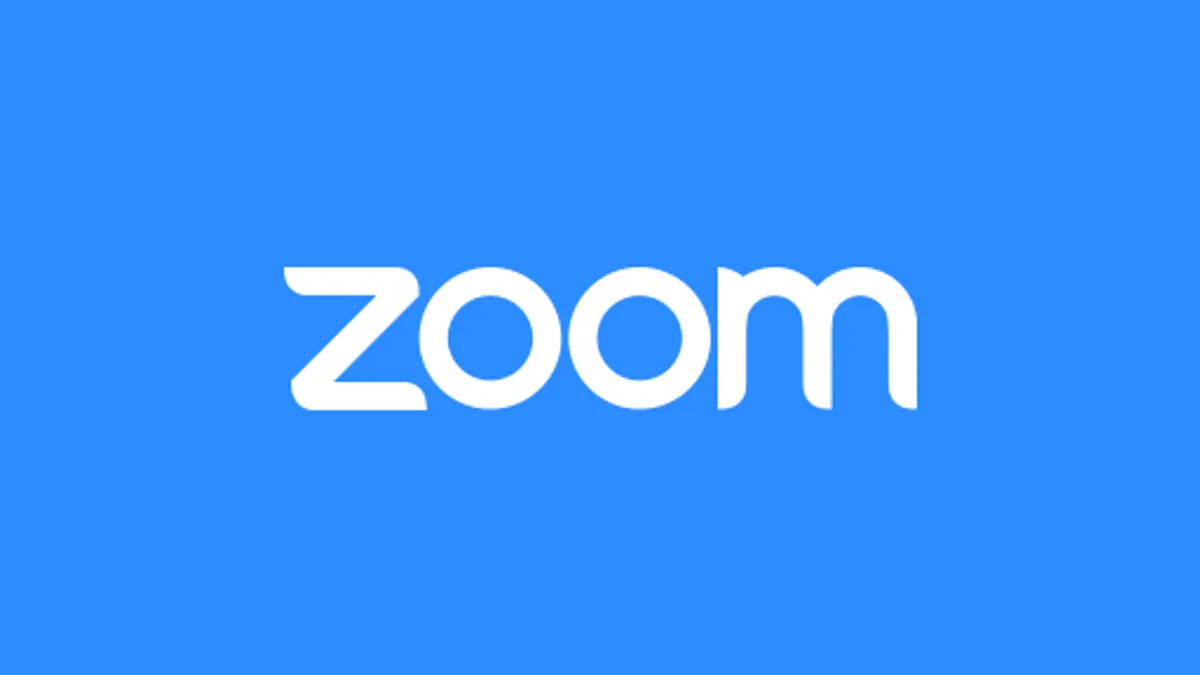Virtual conferencing company Zoom Video Communications went public in April and quickly became the most valuable tech company among those that went public in the first quarter, according to reports.
In just three days, its stock price rose 5% to $69 and reached a market capitalization of almost $17.7 billion. Today, the company is capitalized at about $16 billion.
In an interview with CFO Dive, Zoom CFO Kelly Steckelberg attributed the company's success to its strong financials, video-first architecture and transparent corporate culture.
"We had been a little under the radar compared to other IPOs, and I think it took people by surprise that we were a lot bigger than people realized," said Steckelberg, who helped Zoom navigate the IPO process. She joined the company two years ago after serving as CEO of online dating site Zoosk.
Under-the-radar success
The company's initial performance put it ahead of the two biggest-named IPOs in the first quarter: Lyft, whose share price dropped after it launched and sank to a market capitalization of $17.2 billion, and Pinterest, which had a capitalization of $13.7 billion, according to a CNBC report.
"At the time we went out, we had just reported results of over $300 million for our 2019 fiscal year and were still growing at over 100%. We were also profitable on a non-GAAP basis and cash-flow positive," Steckelberg said. "So, I think the ability of the company to grow at that level but also be profitable and cash-flow positive really did set us apart from some of the other startup companies going public around the same time."
Zoom was launched in 2011 by Eric Yuan as a conferencing platform that sought to distinguish itself for its video-first architecture. One of the biggest names in the space at the time, Cisco Webex, started out as a screen-sharing platform and had to revamp itself to stream video efficiently, Steckelberg said.
"You need different types of architecture to stream a video than to share a PowerPoint," she said. "Everything about our interface, hardware and data center was built on modern video architecture."
Zoom leveraged its video capabilities during the run-up to its IPO by largely conducting its roadshow virtually. While Steckelberg traveled around the country to showcase the company to investors, Yuan streamed himself remotely using the platform.
"I think it showed what you can accomplish and how reliable our platform is to do the roadshow that way," she said.
The company also incorporated its employees, who performed demos by video. "Our employees really loved it because it was their opportunity to have a view into what the IPO roadshow process was all about," Steckelberg said.
The company also held its first quarterly earnings calls using the platform, which made it more interactive than the traditional call, Steckelberg said. Among other things, the executives and analysts who follow the company could see each other during the remarks and the Q&A. Investors and others on the call watched but weren't visible.
"We ran the call exactly as you would expect a traditional call," she said. "We had the analysts queued up and we had a moderator who hosted the call and managed the questions."
Broad range of income
Zoom works on a subscription basis. It sells end-user licenses and charges subscribers on a per-host, per-month basis. It also sells a conference room solution, called Zoom Rooms, which it sells on a per-room basis. And it recently released a cloud-based phone system, which it charges on a per-user, per-month basis.
It also makes a free service available by subscription. Under its "freemium" plan, subscribers can host up to 100 participants, get unlimited one-to-one meetings, and host group meetings for up to 40 minutes in length.
Its goal for the year is to increase market share in all the areas in which it competes, expand internationally, and move upmarket by building enterprise solutions for companies.
Steckelberg said she has organized her operations to support sales and product development. She has two key direct reports: a chief accounting officer, who has a controllership function, including general ledger (GL), accounts payable (AP) and revenue, underneath him. Also underneath the chief accounting officer is the deals desk, which supports the sales organization, and the order desk, which is responsible for provisioning.
She also supervises the head of finance, planning and analysis (FP&A), who handles budgeting and forecasting. And she oversees the company's real estate (all leased properties) and the workplace function.
"Our team is very closely aligned with our sales organization," Steckelberg said. "We help them understand the trends, markets we want to go into, where we want to add people, and I partner very closely with the products team, thinking about the new features we need and who we want to partner with.
"We have lots of strategic partnerships, some of them in the software arena like Slack, Dropbox, Okta, and also we have lots of strategic hardware partners," she said.
The company's next earnings call is September 5.





















